How Online Advertising Works: From Clicks to Conversions
In today’s digital landscape, online advertising has become a cornerstone for businesses looking to reach their audience effectively. With billions of people browsing the internet daily, brands have a unique opportunity to connect with potential customers in ways never before possible. But how does it all work? This blog post will take you on a journey through the world of online advertising, breaking down everything from clicks to conversions. Whether you’re a seasoned marketer or just starting out, you’ll gain valuable insights into this dynamic field and learn how your business can harness its power for growth. So buckle up as we explore the ins and outs of online advertising.
Types of Online Advertising
 Online advertising comes in various forms, each serving distinct purposes and audiences. Display ads are among the most recognizable. They typically appear on websites as banners or images, grabbing viewers’ attention with striking visuals. Search engine marketing is another popular type. This involves placing ads at the top of search engine results pages when users enter specific queries. It’s all about intent connecting with individuals actively seeking your products or services.
Online advertising comes in various forms, each serving distinct purposes and audiences. Display ads are among the most recognizable. They typically appear on websites as banners or images, grabbing viewers’ attention with striking visuals. Search engine marketing is another popular type. This involves placing ads at the top of search engine results pages when users enter specific queries. It’s all about intent connecting with individuals actively seeking your products or services.
Social media advertising has surged in popularity too. Platforms like Facebook, Instagram, and Twitter allow brands to engage users based on their interests and behaviors.
Targeting Methods in Online Advertising
Targeting methods in online advertising have revolutionized how brands connect with consumers. Rather than casting a wide net, advertisers can hone in on specific audiences. Demographic targeting is one of the most common approaches. This method focuses on age, gender, income level, and education to tailor messages effectively. Behavioral targeting takes it a step further by analyzing user behavior across the web. Advertisers track clicks and browsing habits to deliver tailored ads based on interests and past interactions. Geolocation targeting allows businesses to reach customers based on their physical locations. This is particularly useful for local businesses wanting to attract nearby shoppers.
The Importance of Clicks and Conversions
Clicks are the first step in any online advertising journey. They signify interest and engagement, serving as a bridge between potential customers and your offerings. Each click indicates curiosity, a desire to learn more about what you have to offer. However, clicks alone aren’t enough. The ultimate goal is conversions transforming those curious visitors into paying customers or leads. This is where the magic happens. A high click-through rate can look impressive on paper but means little if it doesn’t translate into action.

Tools and Metrics for Measuring Success
Measuring success in online advertising requires various tools and metrics. Analytics platforms like Google Analytics provide valuable insights into user behavior and engagement. They track everything from page views to bounce rates, helping advertisers understand how visitors interact with their ads. Conversion tracking is another essential metric. This involves monitoring actions that align with business goals, such as purchases or sign-ups. Knowing which ads lead to conversions allows marketers to optimize their strategies effectively. Customer Relationship Management (CRM) systems also play a pivotal role. These tools help manage interactions with potential customers, providing data on leads generated through advertising campaigns.
Challenges and Limitations of Online Advertising
Online advertising isn’t without its hurdles. One major challenge is ad fatigue. Users see the same ads repeatedly, leading to disengagement and lower effectiveness. Privacy concerns also loom large. With stricter regulations like GDPR, advertisers must navigate a complex landscape of compliance while still reaching their target audience. Then there’s the issue of ad blockers. Many users install these tools to avoid intrusive ads, which can drastically reduce reach for brands.
Future Trends in Online Advertising
 As technology evolves, so does online advertising. One key trend is the rise of artificial intelligence. Advertisers are increasingly leveraging AI to analyze consumer behavior and preferences in real time. This allows for hyper-personalized ad experiences that resonate with users on a deeper level. Another exciting development is the growth of interactive content. Brands are moving beyond static ads to engage audiences through quizzes, polls, and videos that invite participation. This shift fosters a greater connection between consumers and brands.
As technology evolves, so does online advertising. One key trend is the rise of artificial intelligence. Advertisers are increasingly leveraging AI to analyze consumer behavior and preferences in real time. This allows for hyper-personalized ad experiences that resonate with users on a deeper level. Another exciting development is the growth of interactive content. Brands are moving beyond static ads to engage audiences through quizzes, polls, and videos that invite participation. This shift fosters a greater connection between consumers and brands.
In Conclusion
The landscape of online advertising is vast and ever-evolving. As businesses aim to capture the attention of consumers, understanding how this digital marketing strategy works becomes essential. Each click on an ad holds potential, turning curiosity into engagement. Different types of online advertising offer unique advantages. From pay-per-click campaigns to social media ads, brands can choose what best suits their goals. With precise targeting methods, advertisers can reach specific demographics and interests effectively. Clicks are more than just numbers; they signal interest and intent. When users convert after clicking an ad, it demonstrates a successful connection between the audience and the brand’s message.…






 In the ever-evolving world of loyalty programs, one thing remains constant: customers want value and excitement. Gone are the days when a simple discount or points system is enough to capture their attention. In 2023, successful loyalty programs will go above and beyond to deliver unique experiences that truly resonate with their target audience. Whether exclusive access to limited edition products or personalized discounts on favorite items, providing valuable rewards will keep customers engaged and coming back for more. But value alone is not enough; excitement is equally important in capturing customer loyalty. Think outside the box and surprise your loyal patrons with unexpected perks or exciting events.
In the ever-evolving world of loyalty programs, one thing remains constant: customers want value and excitement. Gone are the days when a simple discount or points system is enough to capture their attention. In 2023, successful loyalty programs will go above and beyond to deliver unique experiences that truly resonate with their target audience. Whether exclusive access to limited edition products or personalized discounts on favorite items, providing valuable rewards will keep customers engaged and coming back for more. But value alone is not enough; excitement is equally important in capturing customer loyalty. Think outside the box and surprise your loyal patrons with unexpected perks or exciting events. In today’s digital age, social currency has become a key ingredient in the success of loyalty programs. What exactly is social currency? It refers to the value and influence individuals have within their social networks. In simpler terms, it’s about leveraging your brand ambassadors and turning them into advocates for your business. So encourage members to share their experiences on social media platforms. By doing so, they not only spread the word about your program but also earn rewards or points in return.
In today’s digital age, social currency has become a key ingredient in the success of loyalty programs. What exactly is social currency? It refers to the value and influence individuals have within their social networks. In simpler terms, it’s about leveraging your brand ambassadors and turning them into advocates for your business. So encourage members to share their experiences on social media platforms. By doing so, they not only spread the word about your program but also earn rewards or points in return.
 Every business should know who its target audience is. This is especially important when it comes to running online ads. You need to know who you’re targeting so that you can create ads that are relevant to them.
Every business should know who its target audience is. This is especially important when it comes to running online ads. You need to know who you’re targeting so that you can create ads that are relevant to them. It’s necessary to monitor your results so that you can see what’s working and what’s not. Keep track of your click-through rate (CTR) and conversion rate. These metrics will tell you how well your ads are performing.
It’s necessary to monitor your results so that you can see what’s working and what’s not. Keep track of your click-through rate (CTR) and conversion rate. These metrics will tell you how well your ads are performing.
 You should also analyze your target audience and determine which channels they use the most. That way, you can put your resources towards the channels that will reach them instead of wasting time and money on ones that won’t. For example, if you’re trying to reach millennials, you might want to focus on digital channels like social media and email marketing.
You should also analyze your target audience and determine which channels they use the most. That way, you can put your resources towards the channels that will reach them instead of wasting time and money on ones that won’t. For example, if you’re trying to reach millennials, you might want to focus on digital channels like social media and email marketing.
 If you want to get quality backlinks, you need to create content worthy of being linked to. It means creating high-quality, informative, and well-written articles, blog posts, infographics, and other types of content. But it doesn’t stop there. You also need to make sure that your content is easily accessible and shareable. That’s why you need to optimize your website for social media sharing and make sure that your content can be easily found by reporters and bloggers looking for sources.
If you want to get quality backlinks, you need to create content worthy of being linked to. It means creating high-quality, informative, and well-written articles, blog posts, infographics, and other types of content. But it doesn’t stop there. You also need to make sure that your content is easily accessible and shareable. That’s why you need to optimize your website for social media sharing and make sure that your content can be easily found by reporters and bloggers looking for sources. Last but not least, you need to fix the broken backlinks on your
Last but not least, you need to fix the broken backlinks on your 
 If you are not a business owner, learning about customer conversion rates can help you prepare for the future. Before we get into the importance of customer conversion rate, let’s look at what it is and why it matters so much to online store owners.
If you are not a business owner, learning about customer conversion rates can help you prepare for the future. Before we get into the importance of customer conversion rate, let’s look at what it is and why it matters so much to online store owners. Increased Revenue – As mentioned earlier, even a slight increase in conversion rates can lead to a significant boost in profits.
Increased Revenue – As mentioned earlier, even a slight increase in conversion rates can lead to a significant boost in profits.
 When running a business, you need to set your objectives and know the ideal techniques to achieve them. On the other hand, you will find out that every company has its ideas, which means that their marketing ideas will be different.
When running a business, you need to set your objectives and know the ideal techniques to achieve them. On the other hand, you will find out that every company has its ideas, which means that their marketing ideas will be different. Another thing you need to consider is communication skills. It is advisable to consider working with an internet marketing agency that offers excellent communication skills. Also, ensure you take your time to inquire about the agency’s policy for communicating with the clients. By doing this, you will know the best company you should hire.
Another thing you need to consider is communication skills. It is advisable to consider working with an internet marketing agency that offers excellent communication skills. Also, ensure you take your time to inquire about the agency’s policy for communicating with the clients. By doing this, you will know the best company you should hire.
 Capital
Capital Skills
Skills SEO Marketing
SEO Marketing
 Experts suggest that search engine optimization leads to a boost in the number of people who visit your website. As long as you are getting excellent services your web page should appear among the top results when people search for topics or tags related to your services and what you have to offer. If you are running a small business SEO is a great way to maximize your enterprise’s potential.
Experts suggest that search engine optimization leads to a boost in the number of people who visit your website. As long as you are getting excellent services your web page should appear among the top results when people search for topics or tags related to your services and what you have to offer. If you are running a small business SEO is a great way to maximize your enterprise’s potential. Almost every household has access to a mobile device or computer. The digital world is full of useful products and services. When you get SEO services you can make sure that your pages are optimized to offer the best user experience. Clients are likely to deal with an agency that makes it easy for them to use the online services. SEO plays a crucial role in making this possible.
Almost every household has access to a mobile device or computer. The digital world is full of useful products and services. When you get SEO services you can make sure that your pages are optimized to offer the best user experience. Clients are likely to deal with an agency that makes it easy for them to use the online services. SEO plays a crucial role in making this possible.

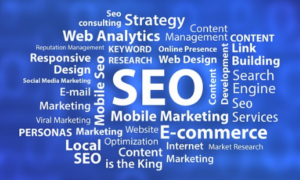 If you want to have increased exposure and brand awareness, make sure that you hire professional SEO companies. Professional SEO services will help in creating brand awareness.
If you want to have increased exposure and brand awareness, make sure that you hire professional SEO companies. Professional SEO services will help in creating brand awareness.
 It is estimated that at least eighty percent of people search for information on the web.
It is estimated that at least eighty percent of people search for information on the web. Since he’ll be working on the internet, he’ll reach millions of people who are not within his locality. For example, if he offers e-commerce services, he’ll be able to sell his products to not only individuals in his country but also those outside the country.
Since he’ll be working on the internet, he’ll reach millions of people who are not within his locality. For example, if he offers e-commerce services, he’ll be able to sell his products to not only individuals in his country but also those outside the country.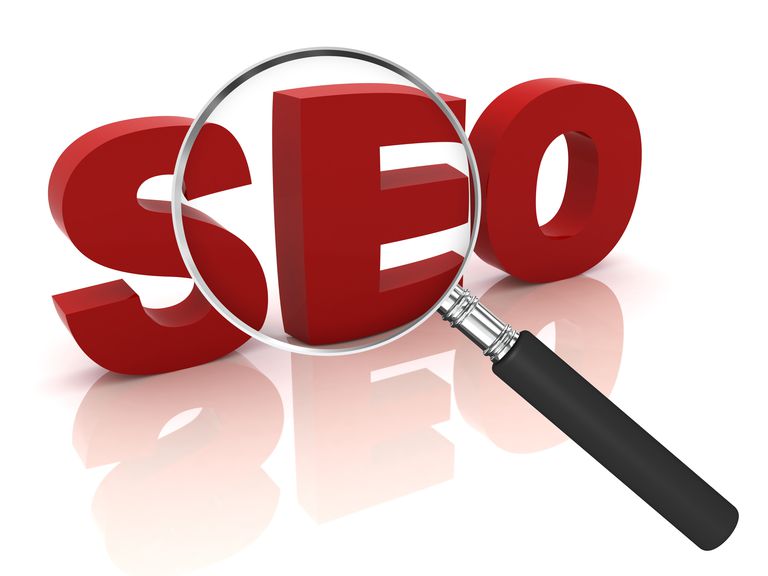
 paragraphs. Today, people prefer to watch videos instead of reading long paragraphs. You need to include more videos on your website to take care of the internet users. This does not mean that you should ignore the use of text altogether. It is important to include text on your website. However, remember to make your text short and readable by separating the text.
paragraphs. Today, people prefer to watch videos instead of reading long paragraphs. You need to include more videos on your website to take care of the internet users. This does not mean that you should ignore the use of text altogether. It is important to include text on your website. However, remember to make your text short and readable by separating the text. past few years, but now it is even intensifying. Web designers now create mobile-friendly websites before they think about the desktop. This is different from the past years where people were creating desktop versions and later creating mobile versions. It is now a reality that the mobile internet users have been given priority.…
past few years, but now it is even intensifying. Web designers now create mobile-friendly websites before they think about the desktop. This is different from the past years where people were creating desktop versions and later creating mobile versions. It is now a reality that the mobile internet users have been given priority.… to find out what it is you want the SEO firm to do in order to communicate expectations and objectives and to measure results. Do you want an audit of your SEO strategies from an SEO Website that will determine what you need to do, do you want to build links and get content marketing. Are you looking to redesigning your website to make it more user-friendly. Do you want on going SEO service that will ensure your company remains on the top of search engine searches? Knowing your need will aid in expressing what your goal is.
to find out what it is you want the SEO firm to do in order to communicate expectations and objectives and to measure results. Do you want an audit of your SEO strategies from an SEO Website that will determine what you need to do, do you want to build links and get content marketing. Are you looking to redesigning your website to make it more user-friendly. Do you want on going SEO service that will ensure your company remains on the top of search engine searches? Knowing your need will aid in expressing what your goal is. The best SEO firms will give their terms and policy of charges and cost. Firms will vary on how they charge some will charge per project while others may have a fixed rate. Be sure to know what are the terms. Finally, the best SEO firm will ensure to have a written contract with their clients. This will stipulate the project being done, timelines and cost.…
The best SEO firms will give their terms and policy of charges and cost. Firms will vary on how they charge some will charge per project while others may have a fixed rate. Be sure to know what are the terms. Finally, the best SEO firm will ensure to have a written contract with their clients. This will stipulate the project being done, timelines and cost.…
 When it comes to advertising, Search Engine Optimization or SEO has become one of the best techniques. What can it do for your business? Simply put, it will significantly increase your chances of getting on the first page of the search engine results. Once this happens, more people will be able to see your website and the products or services that you are providing.
When it comes to advertising, Search Engine Optimization or SEO has become one of the best techniques. What can it do for your business? Simply put, it will significantly increase your chances of getting on the first page of the search engine results. Once this happens, more people will be able to see your website and the products or services that you are providing. SEO is regarded as the most effective form of advertising strategy nowadays. It can even help you market your company at the international level. If you have an online business, then you can expect that you will have customers from other countries. As long as you maintain the quality of your products or services, rest assured that the number of your clients will continue to grow with SEO.…
SEO is regarded as the most effective form of advertising strategy nowadays. It can even help you market your company at the international level. If you have an online business, then you can expect that you will have customers from other countries. As long as you maintain the quality of your products or services, rest assured that the number of your clients will continue to grow with SEO.…
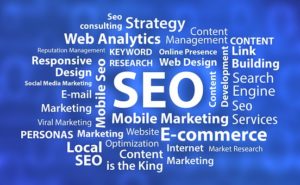 Managing SEO refers to optimizing different websites to boost your rankings. This can be quite confusing since various franchise branches might be providing different products, and have a unique target market. Thus, they must differ as far as local SEO is concerned. Experts understand that creating an SEO strategy for franchises is quite different from other normal businesses. The following are some steps to consider:
Managing SEO refers to optimizing different websites to boost your rankings. This can be quite confusing since various franchise branches might be providing different products, and have a unique target market. Thus, they must differ as far as local SEO is concerned. Experts understand that creating an SEO strategy for franchises is quite different from other normal businesses. The following are some steps to consider: Choose whether you should hire an SEO company or an expert. You can also leave them to manage your entire brands. Hiring an agency for each branch is going to expensive and tough. Thus, it is helpful to hire a single company to work with your whole brand. In this way, you avoid overlap discussed above.
Choose whether you should hire an SEO company or an expert. You can also leave them to manage your entire brands. Hiring an agency for each branch is going to expensive and tough. Thus, it is helpful to hire a single company to work with your whole brand. In this way, you avoid overlap discussed above.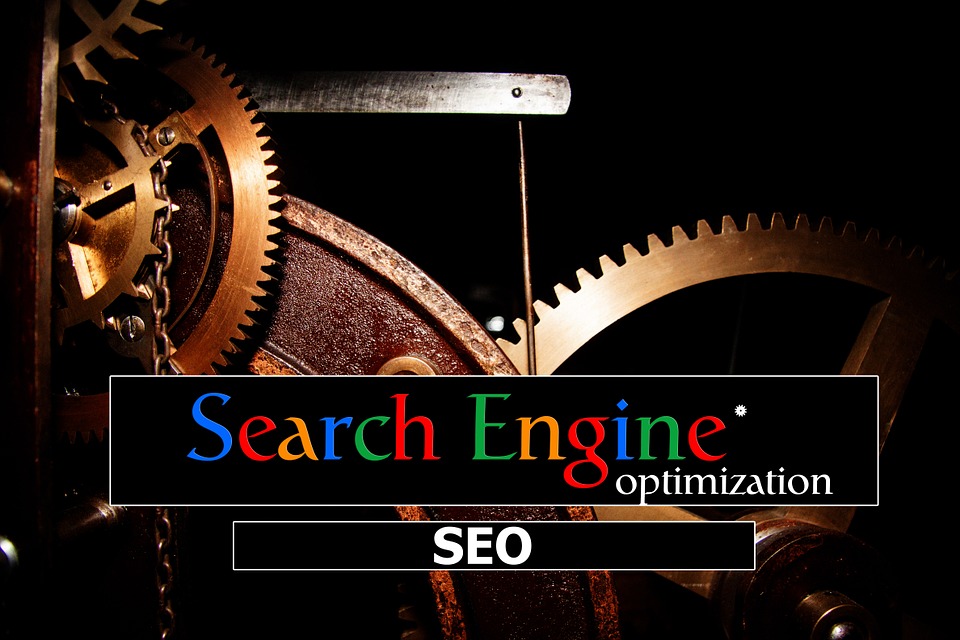

 After all is said and done, it comes down to the price. How much are you paying for the services? It should be reasonable and give you back the value for every dime you are paying for it.
After all is said and done, it comes down to the price. How much are you paying for the services? It should be reasonable and give you back the value for every dime you are paying for it.
 It all stats with the kind of content that you place on your site. Unlike several years ago, search engines have changed the way they rank sites based on content. This means that in order to get a chance, you have to find an SEO company that can help you to come up with high-quality content. They should make it unique because any sign of plagiarism can lead to serious penalties. With content, you should not only be thinking about texts. You should include images, videos, graphics, and many others. At the end of the day, you should convince the search engine that you have the most relevant answers to the questions that users are asking.
It all stats with the kind of content that you place on your site. Unlike several years ago, search engines have changed the way they rank sites based on content. This means that in order to get a chance, you have to find an SEO company that can help you to come up with high-quality content. They should make it unique because any sign of plagiarism can lead to serious penalties. With content, you should not only be thinking about texts. You should include images, videos, graphics, and many others. At the end of the day, you should convince the search engine that you have the most relevant answers to the questions that users are asking. Both outgoing and incoming links are critical when it comes to search engine optimization. The kinds of websites that you link to will determine your ranking. Therefore, you need an SEO company that hives you high-quality links. They should ensure that the links are working because you do not want to end up with tons of links that do not add any value to the site. They also need to make sure that they link to trusted sites. Considering that users will judge you based on where they see your links, it will be a big mistake if you keep linking to questionable websites.
Both outgoing and incoming links are critical when it comes to search engine optimization. The kinds of websites that you link to will determine your ranking. Therefore, you need an SEO company that hives you high-quality links. They should ensure that the links are working because you do not want to end up with tons of links that do not add any value to the site. They also need to make sure that they link to trusted sites. Considering that users will judge you based on where they see your links, it will be a big mistake if you keep linking to questionable websites.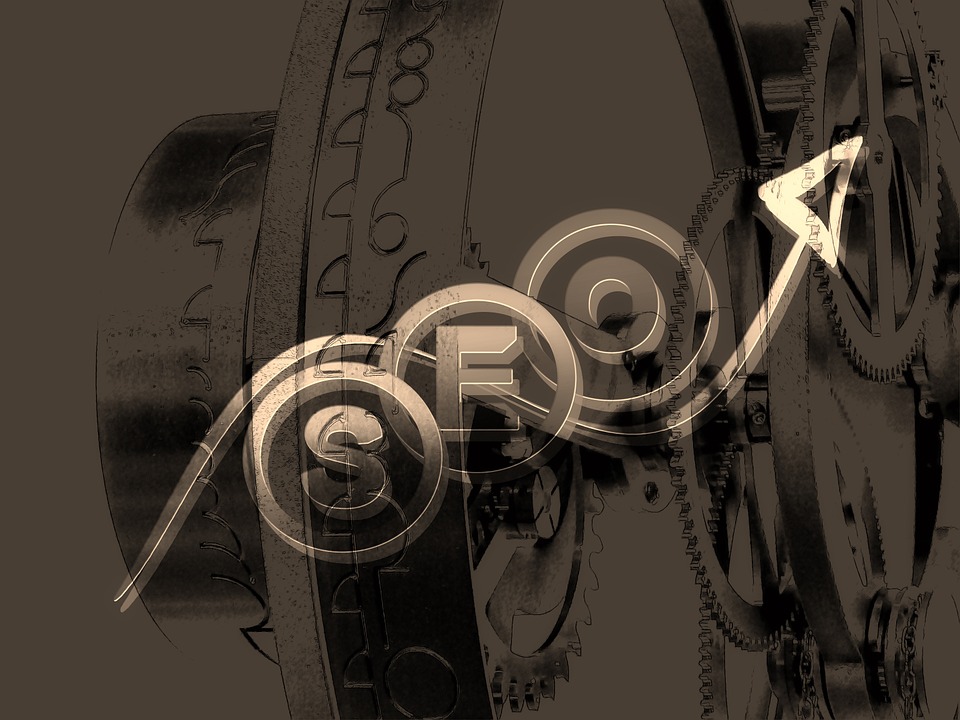
 When looking for an SEO agency, you better go for the one that takes content creation seriously. This is because nowadays, many people look for the information that they will use to make decisions on products to buy online. For instance, if someone wants to buy a smartphone, the person will look for information that will help them buy the right phone online. So you need to make sure that the agency has a team that is capable of righting quality content that your business needs to go the next level.
When looking for an SEO agency, you better go for the one that takes content creation seriously. This is because nowadays, many people look for the information that they will use to make decisions on products to buy online. For instance, if someone wants to buy a smartphone, the person will look for information that will help them buy the right phone online. So you need to make sure that the agency has a team that is capable of righting quality content that your business needs to go the next level. Social media has become one of the best digital marketing tools. There are millions of people making use of various social media platforms. It is important that the SEO agency that you hire take into consideration this fact and therefore ensure that they can tap the many social media users for the benefits of your business.…
Social media has become one of the best digital marketing tools. There are millions of people making use of various social media platforms. It is important that the SEO agency that you hire take into consideration this fact and therefore ensure that they can tap the many social media users for the benefits of your business.…

 Internet marketing allows one to market their business and products while interacting with them at a personal level. Because of the level of accessibility that the internet offers, you can interact with them both before and after the sales process. This makes the customer feel that they are interacting with a real human.…
Internet marketing allows one to market their business and products while interacting with them at a personal level. Because of the level of accessibility that the internet offers, you can interact with them both before and after the sales process. This makes the customer feel that they are interacting with a real human.… Distributed computing is a science which solves a large problem by giving small parts of the problem to many computers to solve and then combining the solutions for the parts into a solution for the problem. Recent distributed computing projects have been designed to use the computers of hundreds of thousands of volunteers all over the world, via the Internet, to look for extra-terrestrial radio signals, to look for prime numbers so large that they have more than ten million digits, and to find more effective drugs to fight the AIDS virus. These projects are so large, and require so much computing power to solve, that they would be impossible for any one computer or person to solve in a reasonable amount of time.
Distributed computing is a science which solves a large problem by giving small parts of the problem to many computers to solve and then combining the solutions for the parts into a solution for the problem. Recent distributed computing projects have been designed to use the computers of hundreds of thousands of volunteers all over the world, via the Internet, to look for extra-terrestrial radio signals, to look for prime numbers so large that they have more than ten million digits, and to find more effective drugs to fight the AIDS virus. These projects are so large, and require so much computing power to solve, that they would be impossible for any one computer or person to solve in a reasonable amount of time.